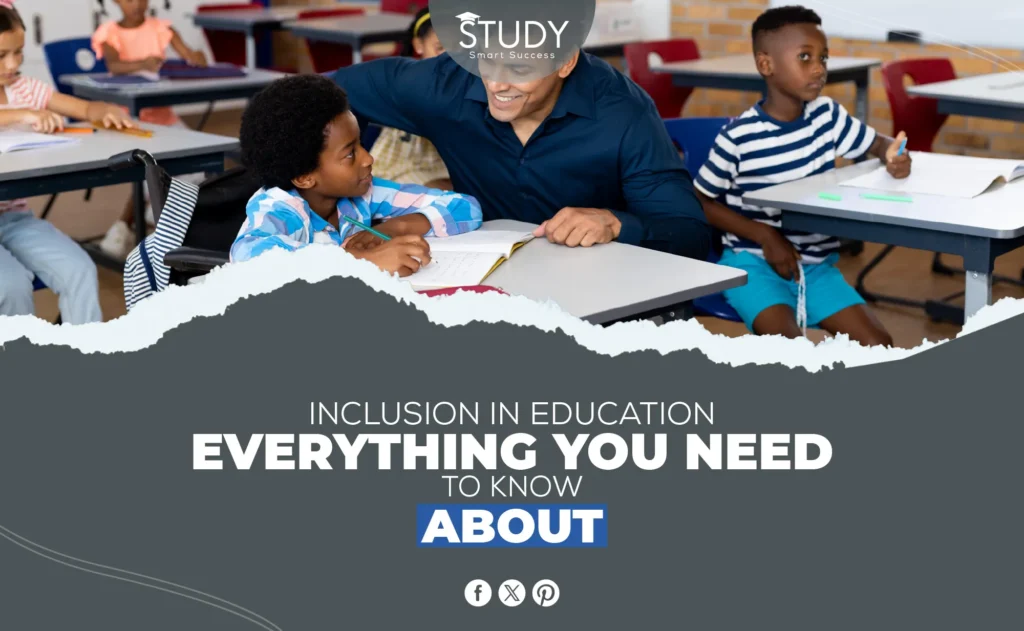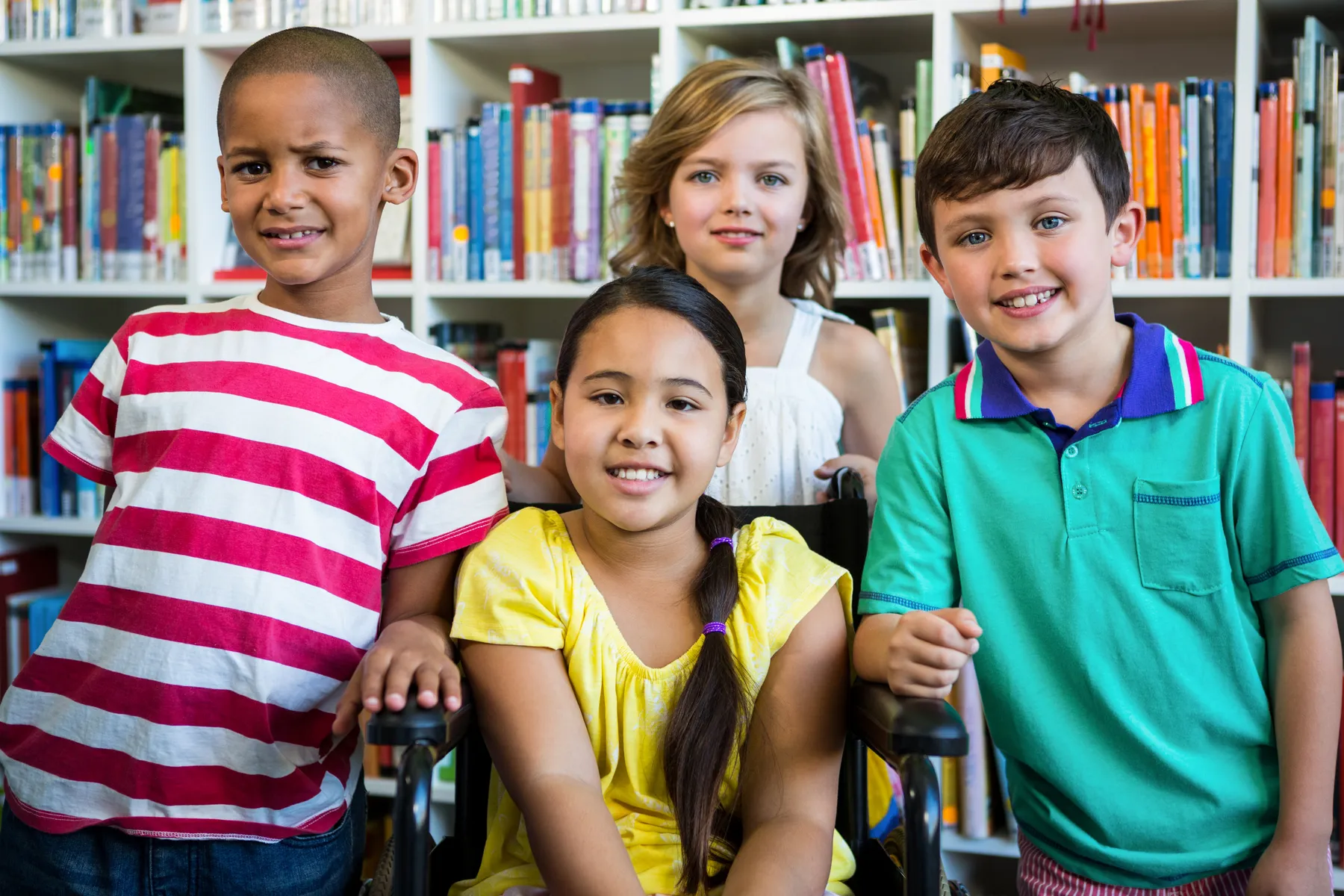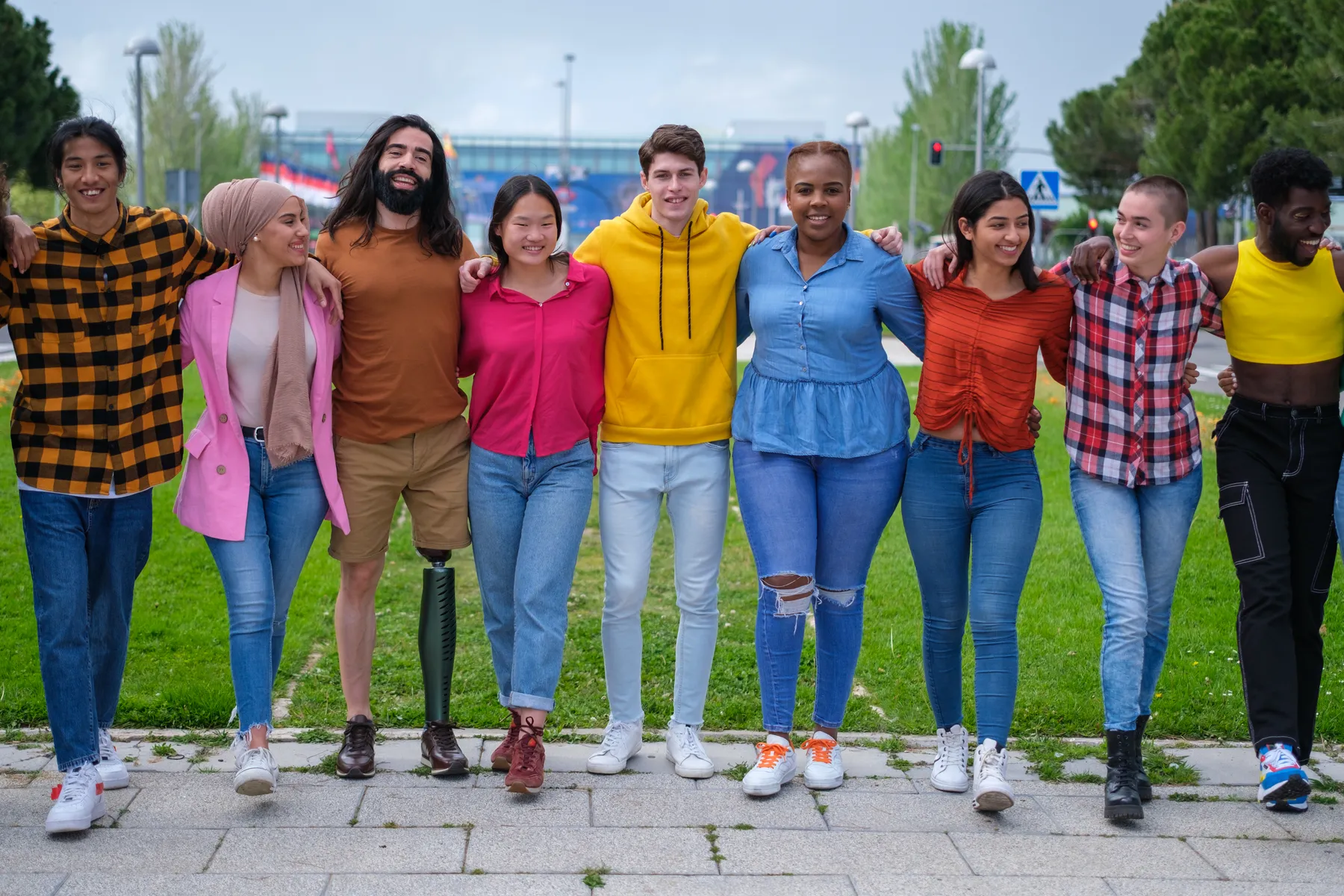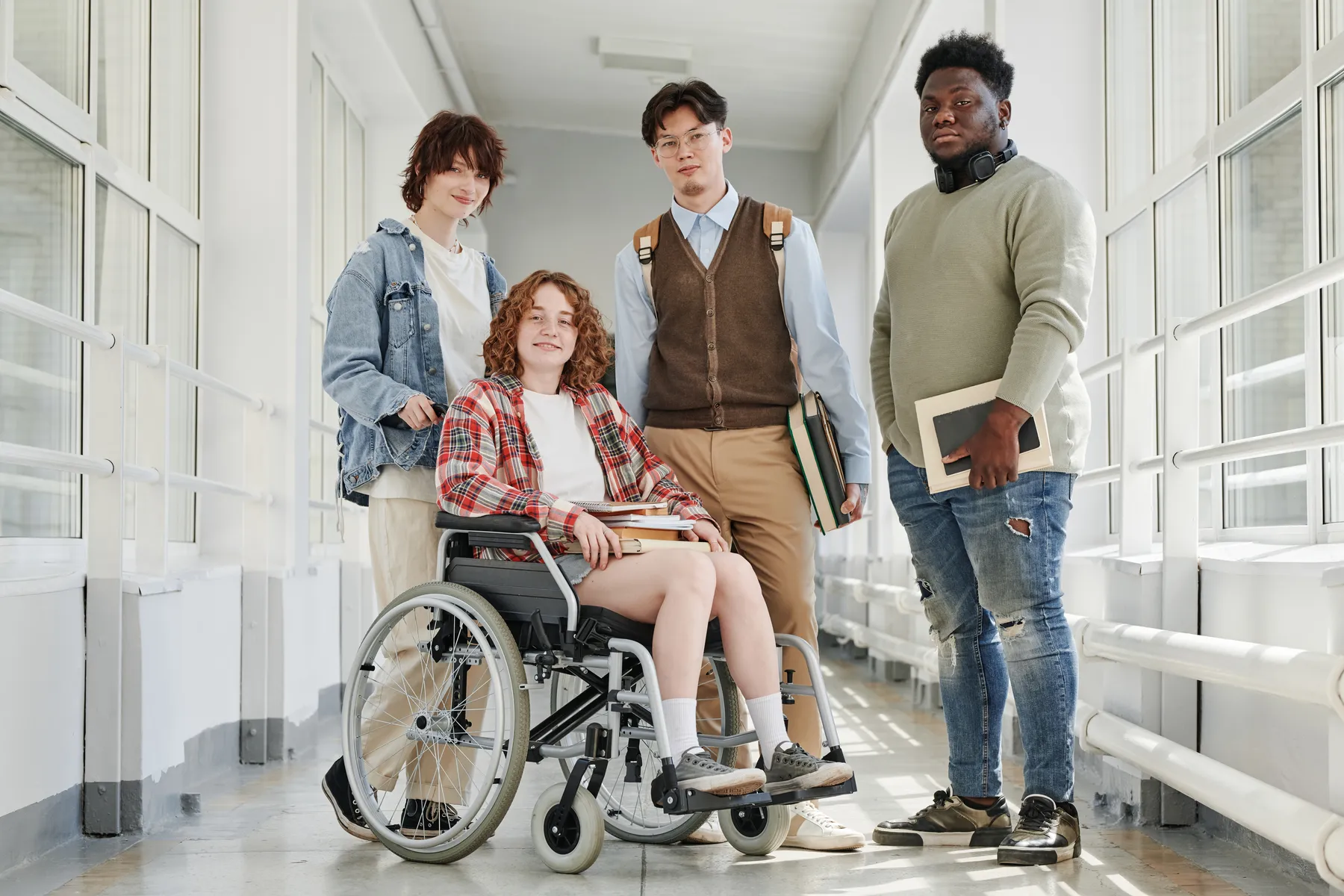Setting the Stage: Importance of Inclusion in Education
In today’s world, which is varied and changing quickly, it’s impossible to say enough about how important it is for schools to include everyone. The old way of teaching put students into groups based on their abilities, meaning many were left out and didn’t have many chances. On the other hand, inclusion tries to make a school setting that values differences and meets the specific needs of each student. This change in attitude is necessary to create a society that values fairness and gives everyone a chance to do well.
If you want to know what DEI is in Education, read our latest blog.
Definition of Inclusion in Educational Context
Inclusion in education means giving all students meaningful chances to study, participate, and contribute to academic and social life regardless of their skills, impairments, or differences. It requires establishing a classroom that celebrates differences and fosters a sense of belonging for all pupils, not just placing them together.
Equity in Education Definition
Inclusive education removes learning barriers by customizing teaching techniques, resources, and classroom environments to meet student needs. The goal is to help each student flourish intellectually, socially, and emotionally.
Purpose of the Guide: Comprehensive Understanding of Inclusion
This guide aims to give you a complete picture of inclusion in education by reviewing its fundamental ideas, advantages, disadvantages, and ways to make it happen. Whether you are a parent, a teacher, an official, or just someone interested in education, this guide is meant to give you the information and tools you need to promote inclusive practices in schools.
The Essence of Inclusion in Education: A Comprehensive Exploration
Understanding Inclusion in Education
What does inclusion mean in education?
Inclusion in education is more complex than just putting kids in the correct class. It’s about making a space that values diversity and acknowledges that each student has their skills and weaknesses.
Embracing Diversity and Differences
At its core, inclusion means accepting that kids are different and valuing those differences. This includes differences in how people learn, skills, experiences, and backgrounds. When teachers recognize and appreciate these differences, they can create a learning setting that helps students grow in all areas.
The idea behind inclusive education is that there is no one-size-fits-all method because all students have unique skills and weaknesses. In this way, it hopes to make every student feel valued and accepted, which will help them feel like they fit.
Creating an Equitable Learning Environment
It’s not enough to put kids with different needs in the same classroom; inclusive education also means removing barriers that make it hard for everyone to learn. This means changing how lessons are taught, the materials used, and the classroom layout so that every student can participate and learn successfully.
Why is Technology Important in Education
All students should be able to reach their full potential by getting the help and resources they need to meet their specific needs. It means making a place where success is possible for everyone, regardless of their past or skills, with the help of individualized instruction and a welcoming approach to learning.
Historical Context of Inclusive Education
Evolution of Inclusion Practices
Knowing the history of inclusive education is essential to understanding how far we’ve come in making learning settings more welcoming for everyone. Inclusion methods have changed over time. They began to change in the middle of the 20th century when teachers and advocates began questioning the idea that students should be put into groups based on their abilities.
As teachers became more aware of the problems with separate classrooms and the benefits of including students with different needs in regular classes, the movement toward inclusive education gathered speed. Over time, people have become more aware of diversity in schools and the importance of using inclusive methods to ensure everyone has the same chances.
Milestones in the Inclusive Education Movement
Several milestones have shaped the inclusive education movement and its impact on global education. Laws and practices to include disabled pupils in average education were a significant achievement. The US Individuals with Disabilities Education Act (IDEA) required disabled students to receive a free and adequate public education in the least restrictive environment.
International frameworks like the Salamanca Statement and Framework for Action on Special Needs Education stressed inclusive education and called for more integration. These milestones demonstrate global acceptance of the need for inclusive education for all kids, regardless of ability or difference.
Benefits of Inclusion in Education
Inclusion in education is more than just putting kids with different needs together in the same class. This method improves things and has many benefits, not just in school but also in social and mental areas. This piece goes into great detail about the enormous benefits of including everyone in school.
Academic Advantages
Enhanced Learning Opportunities
Academically, inclusion creates a better learning environment for all students. Students with different skills and abilities work together in inclusive classrooms to learn from each other. Diversity in perspectives and learning styles enriches education and fosters critical thinking and problem-solving.
Inclusive education encourages teachers to use several methods to make teachings accessible to all pupils. This flexibility in teaching methods improves learning by meeting each student’s demands and deepening curriculum comprehension.
Academic Achievement for All Students
Research shows that inclusive education improves academic performance for all children, dispelling the myth. Students with different needs succeed academically in inclusive settings due to support and adjustments.
Additionally, inclusive classrooms foster peer support and mentorship through collaboration. While struggling pupils receive help, high-achieving students can be role models. Mutual support creates a pleasant academic environment where all students can achieve.
Social and Emotional Development
Fostering Empathy and Understanding
Inclusive education is critical to helping students understand and care about others. Students learn to value diversity more when interacting with friends from various backgrounds and abilities. This real-life experience breaks down stereotypes and makes the school society more open and accepting.
Empathy is an important skill, and inclusive schooling is a great way to develop it. In school, students learn to value and respect differences. This helps build a more caring and accepting society outside of school.
Building Positive Relationships and Social Skills
Positive relationships and social skills emerge naturally in inclusive schools. Students cooperate, communicate, and work well with peers with varied perspectives and abilities. Social contacts create interpersonal skills that are useful in academic and real-world settings.
Students with various needs benefit from inclusion’s social contacts, which reduce isolation and foster belonging. Positive relationships in an inclusive atmosphere create a supportive community that values everyone’s unique contributions.
Preparation for a Diverse Society
Nurturing Global Citizenship
Students attending inclusive schools are ready to become citizens in a diverse and connected world. Being exposed to people of different backgrounds, skills, and points of view in the classroom helps build a feeling of global citizenship. Students learn to value differences and are better prepared to live in a world that values acceptance and teamwork.
People who have been through inclusive education are more likely to value cultural differences and look at problems with an open mind in an international world. It helps them be good members of diverse groups and workplaces.
Promoting Cultural Competence
Cultural competence is essential to inclusive education. Children learn about different practices and perspectives by engaging with friends from diverse cultures. In an age of global collaboration and communication, cultural competence is invaluable.
Inclusive education supports diversity as an asset, preparing students for a multicultural society. Cultural competence enriches students and creates a more peaceful and inclusive world.
Principles and Practices of Inclusive Education
Creating fair learning environments where all students, no matter their abilities or differences, can thrive is the goal of inclusive education, a transformative method. To be genuinely inclusive, educational settings must understand the core concepts and use effective practices.
Core Principles of Inclusion
Respect for Diversity
Respect for variety underpins inclusive education. Inclusion welcomes differences, not just acknowledges them. This approach stresses recognizing and valuing students’ talents, abilities, and backgrounds. Diversity is considered a benefit in an inclusive classroom, enriching the learning experience for everybody.
Teachers, students, and stakeholders must promote diversity by valuing individual differences. This idea establishes an inclusive culture throughout schooling.
Equity and Access
Access and equity are essential to inclusive education. The purpose is to provide high-quality education to all students, regardless of ability or circumstances. Inclusive education acknowledges that students learn differently and removes barriers to success to ensure equal success.
Equity is understanding that some pupils need more help and giving support and accommodations. Inclusive methods prioritize providing all students access to the curriculum, activities, and meaningful learning.
Collaboration and Partnership
Inclusive education requires cooperation and partnership. Inclusion demands collaboration between educators, parents, support personnel, and the community. Collaboration is encouraged and essential to educational success in inclusive settings.
Teachers exchange ideas, tactics, and best practices for fulfilling students’ needs. Parents and caregivers provide their own experiences and ideas for education. The community helps create an inclusive culture outside the classroom.
Strategies for Implementing Inclusive Practices
Differentiated Instruction
Differentiated instruction helps adopt inclusive practices. This method acknowledges students’ diverse learning styles, abilities, and interests. Differentiated instruction caters to individuals’ requirements.
Teachers can tailor material, procedures, and products to student’s readiness, interests, and learning profiles. This technique allows students to access the content at their own pace and according to their strengths and weaknesses.
Universal Design for Learning (UDL)
Universal Design for Learning (UDL) is another effective inclusion technique. UDL makes curriculum and activities accessible to all students, regardless of ability or learning style. Multiple representation, engagement, and expression methods are provided to accommodate varied learners.
Using UDL principles, educators develop flexible learning environments for various learners. This technique lowers learning barriers and makes education more inclusive and responsive.
Individualized Education Plans (IEPs)
Individualized Education Plans (IEPs) are customized for disabled pupils. Despite their association with special education, IEPs help individual learners within the inclusive education framework.
IEPs detail the student’s learning goals, services, accommodations, and educators’ plans to assist them in succeeding. Individualized education plans guarantee that each student receives the focused help they need to participate in school fully.
Legal Framework and Policy Guidelines
Not only is inclusive education a way of teaching, but it is also required by law and policy to ensure that all students have the same chance to get a good education. In this piece, the legal framework and policy guidelines that support inclusive education are looked at in detail. The laws and rules that make up this revolutionary way of teaching are also explained.
Legislative Framework for Inclusive Education
Individuals with Disabilities Education Act (IDEA)
The historic US Individuals with Disabilities Education Act (IDEA) establishes inclusive education. IDEA passed in 1975, guarantees disabled pupils a free and adequate public education (FAPE) in the least restrictive environment. The least restrictive environment is educating impaired pupils as much as possible with their non-disabled peers.
IDEA requires disabled children to have Individualized Education Programs (IEPs) that outline their services and accommodations. The law encourages parents, educators, and support workers to work together to customize educational plans for each student.
Section 504 of the Rehabilitation Act
Section 504 of the Rehabilitation Act is another vital education inclusiveness law. This 1973 law forbids disability discrimination in federally supported programs, including schools. Section 504 protects disabled people in general, unlike IDEA, which targets students.
Schools must make appropriate accommodations for disabled pupils under Section 504. This may involve curricular changes, physical environment changes, or supplementary aids and services.
Every Student Succeeds Act (ESSA)
ESSA was passed into law in 2015, the latest Elementary and Secondary Education Act reauthorization. Student success need, promotes fairness and quality education for all children, including those with disabilities. ESSA promotes accountability, state flexibility, and evidence-based approaches, reinforcing IDEA and Section 504.
SSA emphasizes closing achievement disparities and giving all kids the chance to excel academically. It urges states to foster inclusion and help schools fulfill varied student needs.
Policy Guidelines for Inclusive Practices
Department of Education Guidelines
Many countries have Departments of Education standards to foster inclusive practices. These recommendations help educators, administrators, and stakeholders create inclusive learning environments. They often include curriculum adaptation, teacher training, and support services.
Department of Education recommendations usually follow statutory frameworks and can help schools implement inclusive education. New research, demographics, and educational practices may change these principles.
International Standards for Inclusive Education
International organizations and bodies have set criteria and rules for inclusive education. UNESCO, the UN Educational, Scientific, and Cultural Organization, promotes inclusive education. In 1994, UNESCO’s Salamanca Statement and Framework for Action on Special Needs Education established inclusive education concepts.
International standards emphasize removing learning barriers, fostering diversity, and making education accessible to all. They advise governments and educators worldwide on inclusive education and how to create equitable educational systems.
Conclusion
This concluding summary emphasizes inclusive education’s dual role as a legislative and pedagogical change. The guide extensively covers inclusive education’s fundamentals, history, advantages, and legal frameworks.
Inclusion is creating varied, egalitarian, and barrier-free learning environments that help students grow holistically. History and laws like IDEA and ESSA demonstrate the global commitment to fair education.





